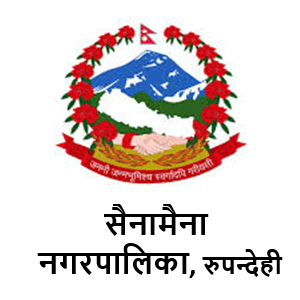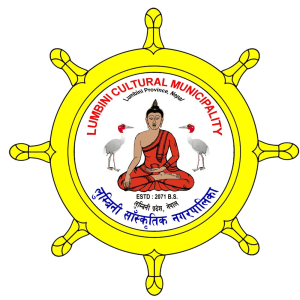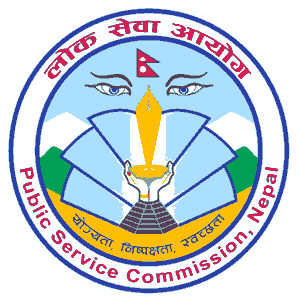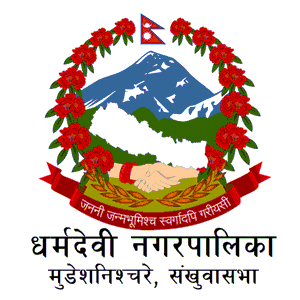Overview
Siddharthanagar Municipality (Siddharthanagar Nagarpalika) is strategically located in the southern part of Rupandehi District, within the Lumbini Province of Nepal. This municipality serves as the administrative headquarters of the district. Geographically, Siddharthanagar is situated at 83º26' east longitude and 27º31' north latitude. The municipality spans a total area of 36.03 square kilometers and is positioned at an altitude of 110 meters above sea level, enjoying a tropical climate. The municipality experiences a wide range of temperatures, with the maximum recorded temperature being 45.20 degrees Celsius and the minimum reaching 2.40 degrees Celsius. The area also receives an average annual rainfall of 1436.5 mm.
Significance and Development
Siddharthanagar Municipality is an emerging hub for tourism, commerce, and industry, primarily due to its proximity to the Nepal-India border. The municipality is named after Siddhartha, the childhood name of Lord Gautam Buddha, reflecting its deep cultural and religious significance. This area serves as a confluence of diverse cultural traditions, literature, language, art, and religion.
The municipality witnessed significant population growth and infrastructure development, particularly after the construction of Gautam Buddha International Airport in 2010, located in Shanti Nagar. Originally sparsely populated until 1990, the town's development gained momentum following this major infrastructure project. The municipality was officially declared as Bhairahawa Nagar Panchayat in 2024 BS and was later renamed Siddharthanagar in 2033 BS.
Administrative and Demographic Details
Siddharthanagar Municipality is divided into 13 wards and is bordered by Omsatiya and Rohini Rural Municipality to the east, Mayadevi Rural Municipality to the west, Omsatiya and Mayadevi Rural Municipality to the north, and Sunauli (Maharajgunj District, India) to the south. The municipality is part of the Lumbini Province, within Rupandehi District, and falls under Federal Constituency No. 3 and Province Constituency No. 3 "Ka."
As per the initial report of the 2078 Census, the total population of Siddharthanagar Municipality is 76,307, with a nearly equal distribution of males (38,136) and females (38,171). The population density stands at 2,118 people per square kilometer, with a total of 12,329 households and 16,011 family members recorded in the latest census.
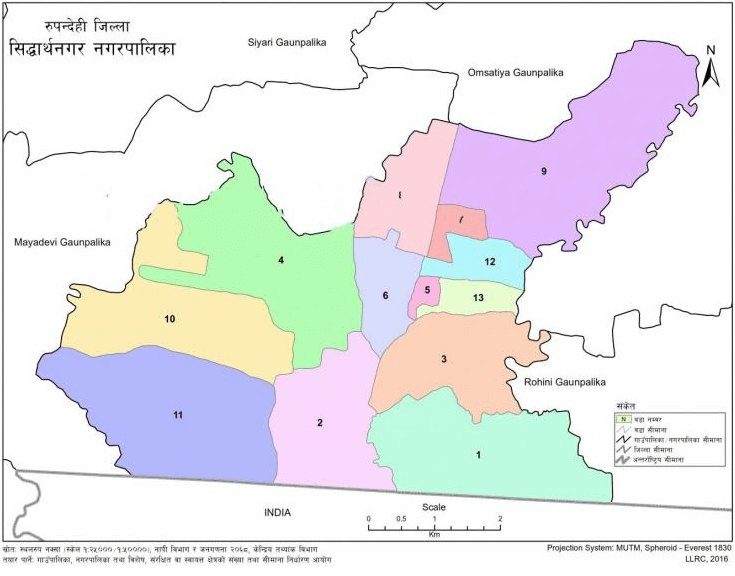
Cultural and Religious Composition
The population of Siddharthanagar is diverse, comprising various ethnic groups such as Brahmins, Chhetris, Muslims, Madhesis, Magars, Gurungs, and Newars. The municipality is home to multiple religions, including Hinduism, Islam, and Buddhism, reflecting its rich cultural mosaic.
Boundaries and Natural Features
The municipality is bounded by:
- East: Omsatiya and Rohini Rural Municipality
- West: Mayadevi Rural Municipality
- North: Omsatiya and Mayadevi Rural Municipality
- South: Sunauli (Maharajgunj District, India)
The Danda and Ghaghara rivers are notable natural features within the municipality.
Education Institutions
Siddharthanagar Municipality is equipped with a variety of educational institutions to cater to the needs of its residents. The municipality hosts:
- 17 community schools
- 42 institutional schools
- 13 religious schools
- 1 Sanskrit school
- 1 learning center
Healthcare Facilities
Healthcare is well-supported in Siddharthanagar with both government and private institutions. Key healthcare facilities include:
-
Government Hospital:
- Bhim Hospital
-
Private Hospitals:
- Lumbini Ran Ambika Shah Eye Hospital
- Universal College of Medical Sciences Teaching Hospital
- Ojesh Hospital Pvt. Ltd.
- Aarogya Multi Specialist Health Care and Diagnostic Center Pvt. Ltd.
-
Basic Health Care Centers:
- Located in Ward Nos. 1, 3, 9, 10, and 11
-
Health Desk:
- Belahiya Health Desk in Siddharthanagar No. 1
Conclusion
Siddharthanagar Municipality stands as a vibrant center for culture, commerce, and development within Nepal. With its historical roots, evolving infrastructure, and strategic geographical location, it continues to play a crucial role in the region's growth. The presence of educational and healthcare institutions further enhances its importance as a municipality that meets the needs of its diverse population, ensuring a balanced and progressive community.



